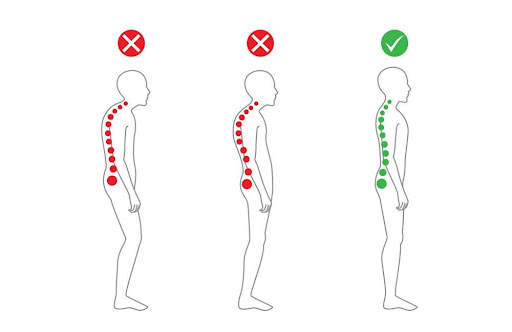

By Dr. Jeremy Campbell,
Licensed Doctor of Physical Therapy
Back pain, especially in the lower region, is something many of us encounter, often making our daily lives more challenging.
It's a widespread issue, and understanding why it happens is key to finding relief.
Our back is a complex structure, essential for supporting our bodies and enabling movement, but when it’s in pain, everything seems to come to a halt.
In this article, we'll explore 12 common causes of lower back pain, trying to understand what might be causing your discomfort and how to address it.
1. Muscle or Ligament Strain
Symptoms: Sharp, sudden pain with stiffness, muscle spasms, and limited mobility.
Causes: Overstretching or tearing muscles or ligaments due to heavy lifting, sudden movements, or poor posture.
When muscles or ligaments in the back are overstretched or torn, it triggers an inflammatory response leading to pain and stiffness.
The body's reflex is to protect the area, causing muscle spasms that further limit movement and compound the pain.
Solution: The key to addressing muscle or ligament strain in the lower back is a combination of rest, gentle exercise, and proper posture.
Initially, rest is crucial to allow the injured tissues to heal. Applying ice can help reduce inflammation and pain in the first 48 hours.
After the acute phase, gentle stretching and strengthening exercises can help restore flexibility and strengthen the surrounding muscles, providing better support to the back.
It's also important to practice good posture, both while sitting and standing, to prevent future strains.
2. Herniated or Bulging Discs

Symptoms: Sharp, radiating pain, numbness, or tingling, typically extending to the legs.
Causes: Discs protruding due to strain, injury, or wear and tear.
Disc herniation occurs when the softer inner material of a spinal disc pushes through a tear in the tougher outer layer.
This can irritate nearby nerves, causing pain that radiates along the nerve's path.
The process is often the result of age-related wear or sudden strain on the spine.
Solution: Treatment for a herniated disc often involves a combination of rest, physical therapy, and pain management.
Resting initially helps reduce inflammation, while physical therapy can strengthen the back muscles and improve flexibility to relieve pressure on the nerve.
In some cases, medications or injections for pain relief and reducing inflammation may be recommended, and surgery is considered when conservative treatments fail to provide relief.
3. Osteoarthritis
Symptoms: Deep, aching pain with stiffness and reduced flexibility in the spine.
Causes: Breakdown of cartilage in the joints and discs in the lower back.
Osteoarthritis in the spine occurs as the cartilage that cushions the joints and discs wears down.
This leads to bones rubbing against each other, causing pain, inflammation, and reduced mobility.
Solution: Managing osteoarthritis in the lower back usually includes a combination of regular low-impact exercise, such as swimming or walking, to maintain joint mobility, along with physical therapy.
Pain relief may be achieved with anti-inflammatory medications, and in some cases, joint injections or surgery might be considered.
4. Osteoporosis
Symptoms: Sudden, sharp pain, often due to a fracture.
Causes: Brittle and porous bones leading to increased fracture risk.
Osteoporosis weakens the bones, including the vertebrae, making them more susceptible to fractures.
These fractures can occur suddenly and be extremely painful, often resulting in sharp, debilitating back pain.
Solution: Prevention and management are key, focusing on diet and lifestyle changes to strengthen bones, along with medications to slow bone loss.
For pain due to fractures, treatments may include rest, braces, or surgery, depending on the severity.
5. Sciatica

Symptoms: Burning or searing pain radiating from the lower back to the leg.
Causes: Compression or irritation of the sciatic nerve.
Sciatica is often caused by a herniated disc pressing against the sciatic nerve.
This pressure leads to inflammation and pain along the nerve's path, often felt as a sharp, shooting pain from the lower back down through the leg.
Solution: Treatment typically involves physical therapy to strengthen the back and abdominal muscles, along with stretches to improve flexibility.
Pain relief can often be managed with over-the-counter medications, and in severe cases, corticosteroid injections or surgery may be necessary.
6. Spinal Stenosis
Symptoms: Dull, cramping pain in the lower back, extending to the legs.
7. Spondylolisthesis
8. Poor Posture
9. Kidney Problems
Symptoms: Sharp pain, usually on one side of the lower back.
10. Sedentary Lifestyle

Symptoms: Dull, persistent pain, worse after prolonged sitting.
11. Pregnancy
12. Stress and Tension
Symptoms: Chronic ache or muscle tightness.
Affordable At-Home Back Pain Solution



